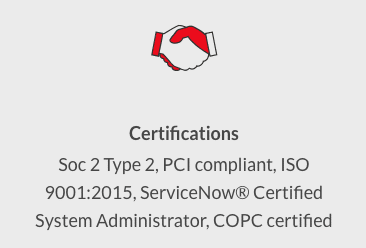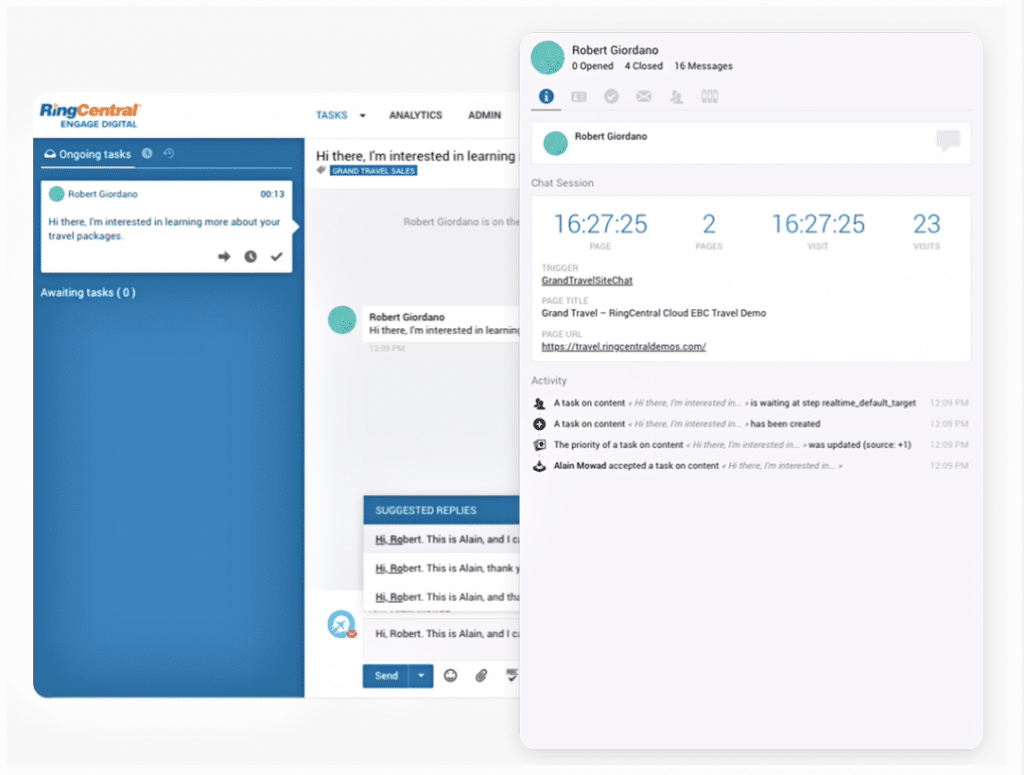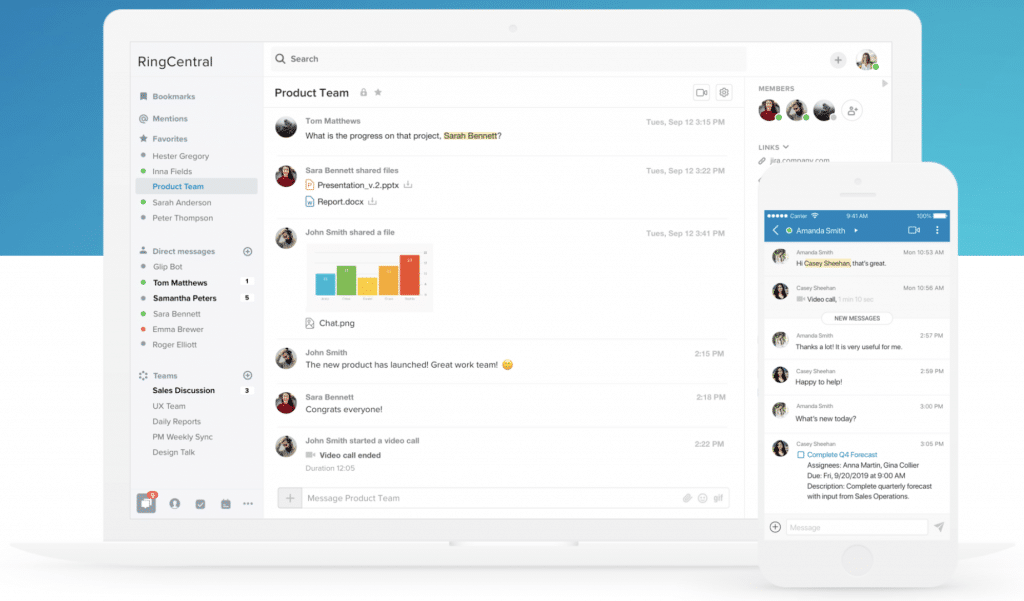As a business owner you wear many hats, but at its core, your main job is to provide value to your customers’ lives.
With that comes a responsibility to help your customers if your product or service is defective, incomplete, or just plain confusing.
This is where technical support comes in.
But the reality of managing a small business is that you’re probably already wearing lots of hats—from boss to administrator to marketer. The idea of adding yet another hat to your wardrobe—no matter how cute—is the equivalent of going to the mall on December 23… literal hell.
If this resonates with you, it might be worth considering outsourcing your technical support.
In this post, we’ll look at:
- What outsourced technical support is, and why it’s gotten such a bad rap
- What are the benefits of outsourced technical support
- What are the disadvantages of outsourced technical support
- 4 steps to successfully outsourcing your technical support
- When outsourcing isn’t a good fit
What is “outsourced technical support?”
As the name implies, outsourced tech support (sometimes referred to as your help desk) is the practice of hiring an outside company to do your technical support for you, answering customer questions and troubleshooting issues with your product or service.
There are many advantages and a few disadvantages to outsourcing your technical support services (which we’ll dig into later), but before moving on any further, it’s important we address the elephant in the room.
It’s no secret that outsourced technical support has gotten a bad rap. To be fair, some outsourced tech support companies don’t offer great service—they’re slow, scripted, and honestly, kind of cold. But more often these companies—and specifically the agents who work for them—are discriminated against because of racism (seriously).
But this is the 21st century. We live in a global economy, and it’s totally reasonable—and beneficial—to outsource your tech support if it makes sense for your company.
The key is to determine whether outsourcing is for you, and if so, how to go about it intelligently. You won’t necessarily change a person’s worldview with a single positive phone call, but you can provide them with a speedy and accurate resolution to their problem.
The pros of outsourced technical support services
Cost savings
One of the greatest benefits of hiring a technical support company is the cost savings. Look at it this way: if you own a small to medium-sized business in a North American urban center, hiring in-house tech support can be costly. After all, you need to hire, train, and finally pay those employees a living wage. Outsourcing to a company where the cost of living is significantly cheaper means you can provide your customers with expert support at a fraction of the cost.
[ebook-download title=”Learn more about managing your finances as a remote team” src=”” link=”https://www.ringcentral.com/remote-work-finance-playbook.html”]
Powered by technology
Whereas your makeshift in-house “help desk” might consist of an agent taking phone calls and answering emails, a full-service outsourced tech support company uses state-of-the-art technology to help as many customers as possible, through their preferred channels, in the shortest amount of time:

For example, RingCentral Contact Center™ consolidates all your support channels—chat, phone, email, and social—into a single, collaborative tool. The result? A serious boost to customer loyalty and satisfaction.
Round-the-clock support
If your customers are all around the world, they will want support when it’s convenient for them, not you. Keeping your tech support in-house usually means only servicing one time zone.
Outsourcing your technical support services, on the other hand, allows you to provide your customers with 24/7 access to your help desk. This way, agents either work in rotating shifts or are distributed across multiple time zones and provide a great customer experience no matter their location.
Easily scale up and down
Besides the cost associated with employing an in-house tech support team, the resources required to scale the team based on volume can be huge.
Consider this scenario: Let’s say you own a company that’s highly seasonal. The number of support employees you need during and immediately after Christmas, for example, is double what you’d need during the summer months. Outsourcing your tech support means not only offloading your customer inquiries but also the administrative duties associated with hiring and training seasonal employees.
Cons of outsourced technical support services
Poor quality control
This is not to say that outsourcing your tech support will result in poor quality support. Instead it means your ability to monitor and influence the quality of support will be limited compared to if the department lived within your organization.
Reduced feedback
If your software has a bug, you can bet your customers are going to find it—and your help desk will be the first to know. If tech support is in-house, they can easily notify your development team to get the bug fixed. But if it’s outsourced, it can take longer for them to not only be notified but also get the information they need to investigate and fix the situation.
Bugs aside, lots of companies rely on customer feedback to decide what to work on next—for example, if many customers need support for the setup of a certain product feature. If this describes your company, you may want to think long and hard whether outsourcing is the best way to go.
Limited niche technical knowledge
If your company gets the same troubleshooting questions over and over again and can easily resolve them with one or two interactions, contracting a technical support company may be the way to go.
On the other hand, if customers often have complex questions that require technical expertise and serious customer service teamwork, outsourced tech support may be unable to help quickly enough, leaving your customers feeling frustrated and abandoned.
4 steps to successfully outsourcing technical support
So you’ve read through the pros and cons and have decided, yes, your company would benefit from outsourced tech support. Rest assured you’re in good company, with companies like Harvard Business Publishing, Sephora, and Globecast World TV also leveraging the power of outsourced technical and customer support.
But before you give yourself a high-five, you’ve got a bit of legwork to do. The next four steps will take you the rest of the way.
1. Identify your needs and limitations
Being crystal clear about what you need will make your search for the perfect tech support outsourcing company smooth sailing. Ask yourself:
- What languages do I need to support? What time zones?
- Who are my customers, and how do they prefer to get in touch? (Remember, a recent report revealed that “52% of millennials actively use social media to resolve customer service issues.” Learn more about social media best practices for businesses.)
- How many customer interactions are we currently handling on a daily/weekly/monthly basis?
- What is my budget?
2. Seek out credibility
Not all outsourced tech support services are created equal, and it’s your job to sift out the good ones from the rest. The good news is there are a few clues to keep an eye out for to make your job easier:
- Customer testimonials and customer stories: Specificity is key here. Look for customer names, job titles, and logos, as well as quotes and results that prove the value of the service, whether it’s in dollars or some other relevant metric.

Customer quotes are great, but you know what’s better? Video case studies like this one. After all, only a truly happy customer would go through the hassle of filming a case study.
- Reviews and “Best of” lists: Remember to consider the source. If a call center company is giving themselves top ratings in every category, you should probably look for a less biased source. Even if they are the best, a second (or third or fourth) opinion never hurts. (Here are some customer review examples.)
- Certifications, trust seals, and awards: These demonstrate a certain level of professionalism, security, and prestige. Again, you’ll want to do a little digging to see if what they’re flaunting actually means anything—if it does, this could be a good indicator that they know what they’re doing.

Look for compliance certifications like these (also found on the CGS website), which mean they’ve been approved to handle your customers’ data in a secure environment.
3. Create your troubleshooting manual
Once you’ve determined your needs and limitations and found a credible call center company to handle your technical support, you’ll need to work with them to create your troubleshooting manual.
Don’t underestimate the value of this manual. There’s a reason it takes a decent amount of time and resources to put together. After all, this is what the tech support agents will refer to every time your customers reach out to them.
Here’s what it should include:
- Frequently asked questions—and answers, of course. If your customers ask the same 20 questions 80% of the time, the manual should provide those answers in an easy to understand format.
- Product and feature details, as well as instructions for performing any tasks the customer would need to know about.
- Detailed internal processes, like instructions on how to escalate issues that may be beyond the capability of your average agent.
- Additional resources, like a link to a repository of past issues, customer-facing FAQ, or help center pages.

No matter how simple you think your product is, your customers will probably find a troubleshooting manual useful. Here’s an excerpt from a dishwasher troubleshooting manual.
4. Gather feedback and make adjustments
Accept that even if you hire an amazing company with top-tier agents, they’ll still need some time to work out all the kinks and get things right with your customers. Work closely with them to iron out your manual so they can work with their agents to deliver the best possible service to your customers.
When outsourcing isn’t a good fit
You may mull over the pros and cons of outsourcing your tech support and determine it’s actually not a great fit for your company.
If that’s the case, it may be worth investing in a tool (or tools) to help your internal team help more customers more efficiently. Here are two key things to look for:
1. Multichannel, single-profile support
Phone-only tech support is a thing of the past. Some customers prefer to get help over the phone while others prefer live chat or email. Others still prefer a combination of all three, depending upon the complexity of their request.
Whatever the case, your team needs to be able to easily handle inbound calls from all channels, and certain tools can help by consolidating all support requests into a single customer profile.

For example, RingCentral’s live chat tool allows you to see the customer’s support history, so you can get up to speed on past and current requests.
2. Collaboration
Collaborative tools ensure your departments don’t operate in silos, which can be detrimental to your business.
For example, let’s say your tech support team gets multiple requests a day for the same issue. It’s a simple fix, but when you’re getting 10+ requests per day it adds up. You need effective teamwork here.
On the other hand, the issue is something that could be easily resolved with just one day of developer work. The problem is these departments don’t speak to each other.
This is where a collaborative team messaging tool would come in handy. For example, the RingCentral app lets you send instant messages and share knowledge and expertise across the team, eliminating silos and improving efficiency:

Whether your team is in a single location or distributed, you can get the real-time answers and support you need to resolve issues quickly and for good.
Of course, it helps if your team has a well-established collaborative approach when it comes to helping customers.
Is outsourcing tech support right for you?
A bad tech support interaction can leave a bad taste in anyone’s mouth. In fact, 41% of customers will actually stop using a product or service after having to repeat themselves over and over or after being passed from rep to rep.
The truth is, whether you handle your tech support in-house or outsource your help desk, it really doesn’t matter, so long as your customers are treated with respect and their issues are resolved in a timely manner.
For years outsourced tech support has had a bad reputation, but it’s time to challenge the assumption that just because something is foreign means it’s inherently worse. In fact, over the years outsourced tech support has only gotten better—and it continues to delight customers thanks to expertly trained agents and state-of-the-art technology.
Originally published Mar 01, 2020, updated Jul 25, 2024





